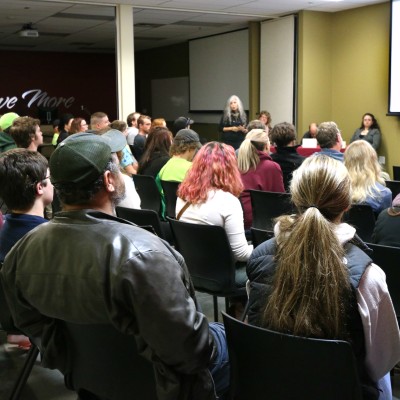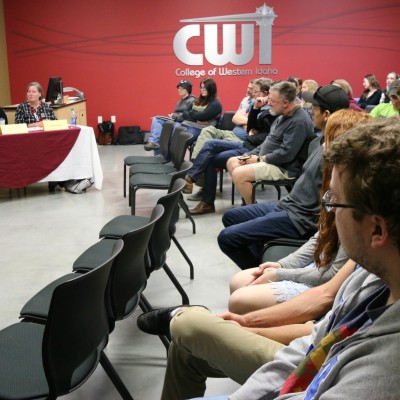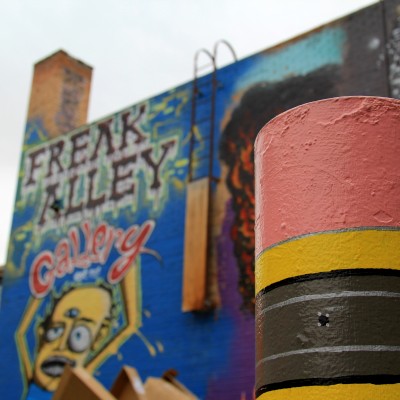Just about everywhere you look, art can be found in some shape or form. A group of local artists, educators, and community leaders recently gathered at College of Western Idaho (CWI) to talk about the importance of art in public places. The panel-style discussion was open to the public and more than 60 people showed up to participate.
“Public art makes people feel connected,” Karen Bubb, the City of Boise’s public art manager and one of the six panelists, said. “Art has the ability to tell stories and it helps engage our community.”
From monuments and metal sculptures to public graffiti and traditional paintings, the panelists discussed art’s overall value to society. They all agree that art is more than just a gateway for artists to express themselves. It has the power to unite communities.
“Art should be inclusive, not exclusive,” Colby Akers, a panelist and local artist, said. “When people come to me, I never turn them away.”
Akers is the creator behind Boise’s Freak Alley. Located in the heart of downtown, Freak Alley got its start when Akers was painting in an alley behind a Boise business. He was asked to paint the business’s door. When he finished, the owner invited him to keep going, and that’s exactly what he did. He eventually moved from business to business—asking permission to continue his work. No one said no, so he kept on going. So far, more than 300 people have collaborated to make Freak Alley what it is today.
“This gives kids who get in trouble tagging an outlet to do it, and it becomes something positive for the community,” Akers said.
Two other panelists, local artists Mark Baltes and Alma Gomez, are also focused on collaborative efforts. Baltes, a graphic artist, works with local machinists and welders to bring his metal creations to life. Gomez was commissioned to create CWI’s first piece of public art last year, and she did it with CWI art students’ help. The mural they created, titled “Spirit of Collaboration,” was the inspiration for the panel discussion. Partially funded by the Idaho Humanities Council, the mural lives in the lobby at CWI’s Micron Center for Professional Technical Education.
“CWI is continually working to develop its public art program with the goal of strengthening connections with the community and providing valuable learning experiences for students,” Brenda Fisher, CWI’s Art Program Chair, said.
The panel discussion was moderated by Kathleen Keys; the art department chair at Boise State University. CWI Art History instructor Karen Brown also participated, along with Antonia Wynn of the Nampa Art Collective.



